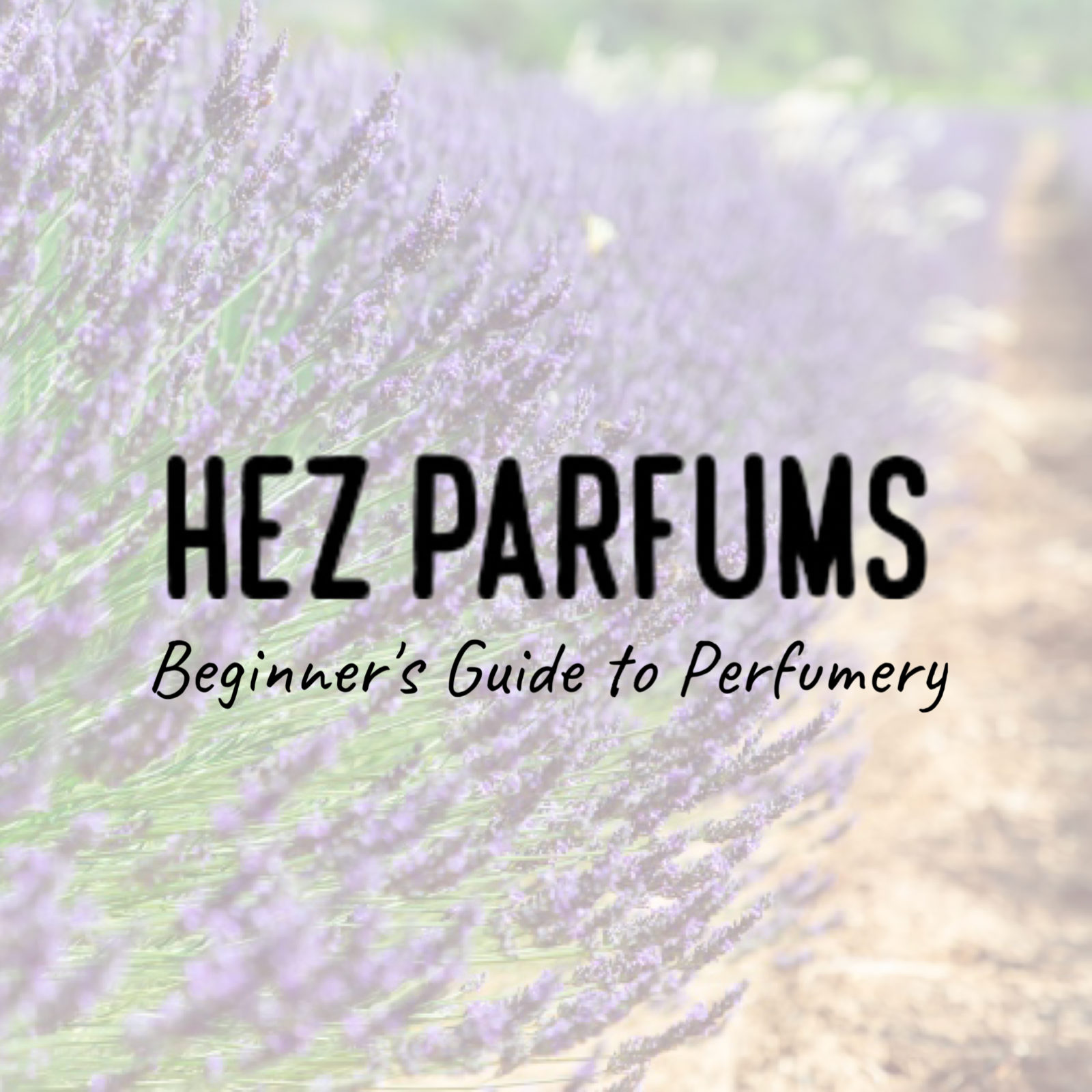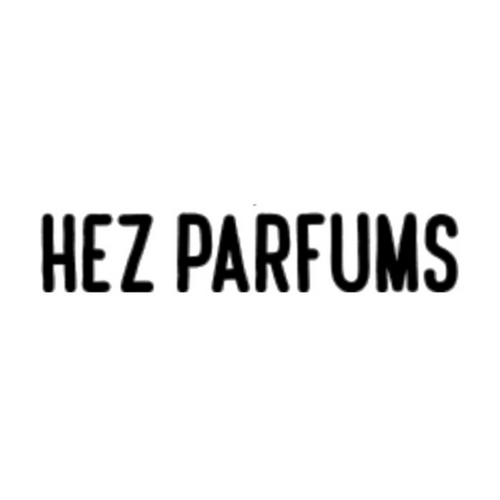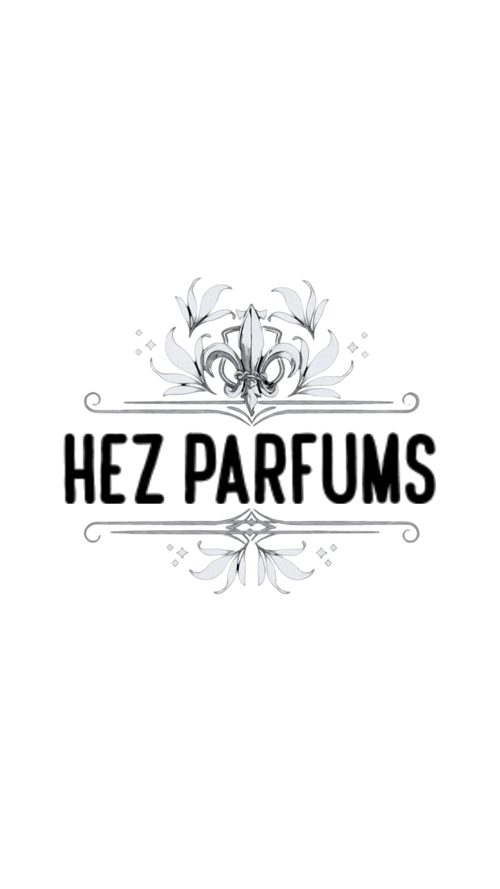Hez Parfums Beginner's Guide to Perfumery 005 - 20 Aroma Chemicals Every New Perfumer Should Know

Starting a career in perfumery can be both thrilling and daunting. To navigate this complex world, a solid understanding of key aroma chemicals is crucial. These substances are the building blocks of fragrance creation, each contributing unique notes and characteristics to the final product. Here’s an in-depth look at twenty essential aroma chemicals every aspiring perfumer should know, along with example formulas to illustrate their use in creating well-rounded fragrances.

1. Limonene
Profile: Citrus, lemon-like
Details: Limonene is a colorless liquid that provides a fresh, zesty aroma reminiscent of lemon and other citrus fruits. It is frequently used in top notes to impart a bright and energetic quality.
Example Formula: Citrus Burst
- Limonene: 10%
- Bergamot Oil: 8%
- Lemon Oil: 6%
- Grapefruit Oil: 5%
- Ethanol: 71%

2. Linalool
Profile: Floral, lavender-like
Details: Linalool is a naturally occurring terpene alcohol found in many flowers and spice plants. It offers a soothing, floral aroma with a hint of spiciness.
Example Formula: Lavender Serenity
- Linalool: 15%
- Lavender Oil: 10%
- Geraniol: 5%
- Sandalwood Oil: 3%
- Ethanol: 67%

3. Eugenol
Profile: Spicy, clove-like
Details: Eugenol has a warm, spicy aroma characteristic of cloves. It adds depth and complexity to fragrances, particularly those with oriental or spicy themes.
Example Formula: Spiced Ambrosia
- Eugenol: 12%
- Cinnamon Oil: 8%
- Vanillin: 5%
- Patchouli Oil: 4%
- Ethanol: 71%

4. Cinnamal
Profile: Cinnamon-like, spicy
**Details:** Cinnamal, or cinnamaldehyde, provides a rich, spicy scent reminiscent of cinnamon. It’s an essential component in creating warm, inviting fragrances.
Example Formula: Warm Spice
- Cinnamal: 8%
- Clove Oil: 6%
- Vanillin: 4%
- Tonka Bean Absolute: 3%
- Ethanol: 79%

5. Vanillin
Profile: Sweet, vanilla-like
Details: Vanillin is the primary component of vanilla beans, giving it a sweet, creamy aroma. It is a cornerstone of gourmand fragrances.
Example Formula: Vanilla Dream
- Vanillin: 20%
- Sandalwood Oil: 10%
- Benzyl Acetate: 6%
- Ambroxan: 4%
- Ethanol: 60%

6. Iso E Super
Profile: Woody, amber-like
Details: Iso E Super is known for its smooth, woody aroma with amber-like qualities. It adds sophistication and depth to modern fragrances.
Example Formula: Modern Woods
- Iso E Super: 15%
- Cedarwood Oil: 10%
- Vetiver Oil: 5%
- Bergamot Oil: 3%
- Ethanol: 67%

7. Hedione
Profile: Fresh, jasmine-like
Details: Hedione is a synthetic compound with a fresh, jasmine-like scent and a hint of green notes. It enhances the overall floral profile.
Example Formula: Floral Radiance
- Hedione: 12%
- Jasmine Absolute: 8%
- Ylang-Ylang Oil: 5%
- Geraniol: 3%
- Ethanol: 72%

8. Geraniol
Profile: Rose-like, floral
Details: Geraniol is a monoterpene alcohol with a sweet, rosy scent. It is commonly used in floral perfumes to impart a natural, elegant rose note.
Example Formula: Rose Elegance
- Geraniol: 15%
- Rose Oil: 10%
- Jasmine Absolute: 5%
- Linalool: 3%
- Ethanol: 67%

9. Benzyl Acetate
Profile: Fruity, floral
Details: Benzyl acetate has a fruity, floral aroma often associated with jasmine. It provides a delicate and sweet note.
Example Formula: Jasmine Blossom
- Benzyl Acetate: 12%
- Jasmine Absolute: 10%
- Orange Blossom Oil: 6%
- Vanilla Absolute: 3%
- Ethanol: 69%

10. Alpha-Iso-Methyl Ionone
Profile: Powdery, woody, violet-like
Details: Alpha-Iso-Methyl Ionone offers a powdery, woody scent with violet-like nuances. It adds depth and sophistication.
Example Formula: Violet Essence
- Alpha-Iso-Methyl Ionone: 10%
- Violet Leaf Oil: 8%
- Sandalwood Oil: 6%
- Patchouli Oil: 4%
- Ethanol: 72%

11. Coumarin
Profile: Sweet, hay-like, vanilla-like
Details: Coumarin provides a sweet, hay-like aroma with hints of vanilla. It evokes warmth and richness.
Example Formula: Cozy Hay
- Coumarin: 12%
- Tonka Bean Absolute: 8%
- Vanilla Absolute: 5%
- Cedarwood Oil: 3%
- Ethanol: 72%

12. Lactone (Gamma-Nonalactone)
Profile: Creamy, coconut-like
Details: Gamma-Nonalactone has a creamy, tropical scent reminiscent of coconut. It adds a fruity, exotic element.
Example Formula: Tropical Bliss
- Gamma-Nonalactone: 15%
- Coconut Oil: 10%
- Ylang-Ylang Oil: 6%
- Bergamot Oil: 3%
- Ethanol: 66%

13. Ambroxan
Profile: Warm, ambergris-like
Details: Ambroxan has a warm, ambergris-like scent with woody and musky undertones. It is valued for its long-lasting and complex aroma.
Example Formula: Amber Elegance
- Ambroxan: 12%
- Sandalwood Oil: 8%
- Vetiver Oil: 5%
- Vanilla Absolute: 4%
- Ethanol: 71%

14. Methyl Anthranilate
Profile: Grape-like, fruity
Details: Methyl Anthranilate offers a sweet, grape-like aroma. It adds a playful, fruity quality to perfumes.
Example Formula: Fruity Bouquet
- Methyl Anthranilate: 10%
- Grape Oil: 8%
- Jasmine Absolute: 6%
- Orange Blossom Oil: 4%
- Ethanol: 72%

15. Patchouli Oil
Profile:** Earthy, woody
Details: Patchouli oil is known for its rich, earthy aroma with woody undertones. It adds depth and complexity to fragrances.
Example Formula: Earthy Mystique
- Patchouli Oil: 15%
- Cedarwood Oil: 10%
- Vetiver Oil: 5%
- Bergamot Oil: 3%
- Ethanol: 67%

16. Sandalwood Oil
Profile: Warm, creamy, woody
Details: Sandalwood oil provides a warm, creamy, and luxurious woody aroma. It’s highly valued for its smooth, rich scent.
Example Formula: Sandalwood Serenity
- Sandalwood Oil: 20%
- Vanilla Absolute: 10%
- Benzyl Acetate: 6%
- Ylang-Ylang Oil: 4%
- Ethanol: 60%

17. Cedarwood Oil
Profile:** Dry, woody
Details:** Cedarwood oil offers a dry, woody scent with a hint of smokiness. It adds a sense of strength and stability.
Example Formula: Smoky Wood
- Cedarwood Oil: 15%
- Iso E Super: 10%
- Ambroxan: 5%
- Vetiver Oil: 4%
- Ethanol: 66%

18. Bergamot Oil
Profile: Fresh, citrusy, slightly floral
Details: Bergamot oil has a bright, citrusy aroma with a subtle floral undertone. It provides freshness and elegance.
Example Formula: Citrus Fresh
- Bergamot Oil: 15%
- Limonene: 10%
- Jasmine Absolute: 5%
- Geraniol: 3%
- Ethanol: 67%

19. Ylang-Ylang Oil
Profile: Exotic, floral
Details: Ylang-Ylang oil offers an exotic, rich floral scent with a hint of sweetness. It is used to create opulent and sensual floral notes.
Example Formula: Exotic Bloom
- Ylang-Ylang Oil: 15%
- Jasmine Absolute: 10%
- Bergamot Oil: 5%
- Vanilla Absolute: 4%
- Ethanol: 66%

20. Jasmine Absolute
Profile: Rich, sweet, complex floral
Details: Jasmine absolute is known for its rich, complex, and sweet floral aroma. It adds a luxurious and captivating scent.
Example Formula: Jasmine Allure
- Jasmine Absolute: 20%
- Hedione: 10%
- Geraniol: 5%
- Sandalwood Oil: 3%
- Ethanol: 62%
Conclusion
Mastering these twenty essential aroma chemicals is crucial for any aspiring perfumer. Each compound contributes distinct characteristics and nuances, forming the building blocks of complex and balanced fragrances. By understanding their profiles and experimenting with the example formulas provided, you can develop a deeper appreciation for the artistry and science of perfumery. These foundational ingredients will empower you to create a diverse range of scents, from fresh and vibrant to deep and sophisticated. As you explore and blend these chemicals, you'll gain valuable insights into fragrance composition, ultimately paving the way for your creative journey in crafting unique and memorable perfumes.

